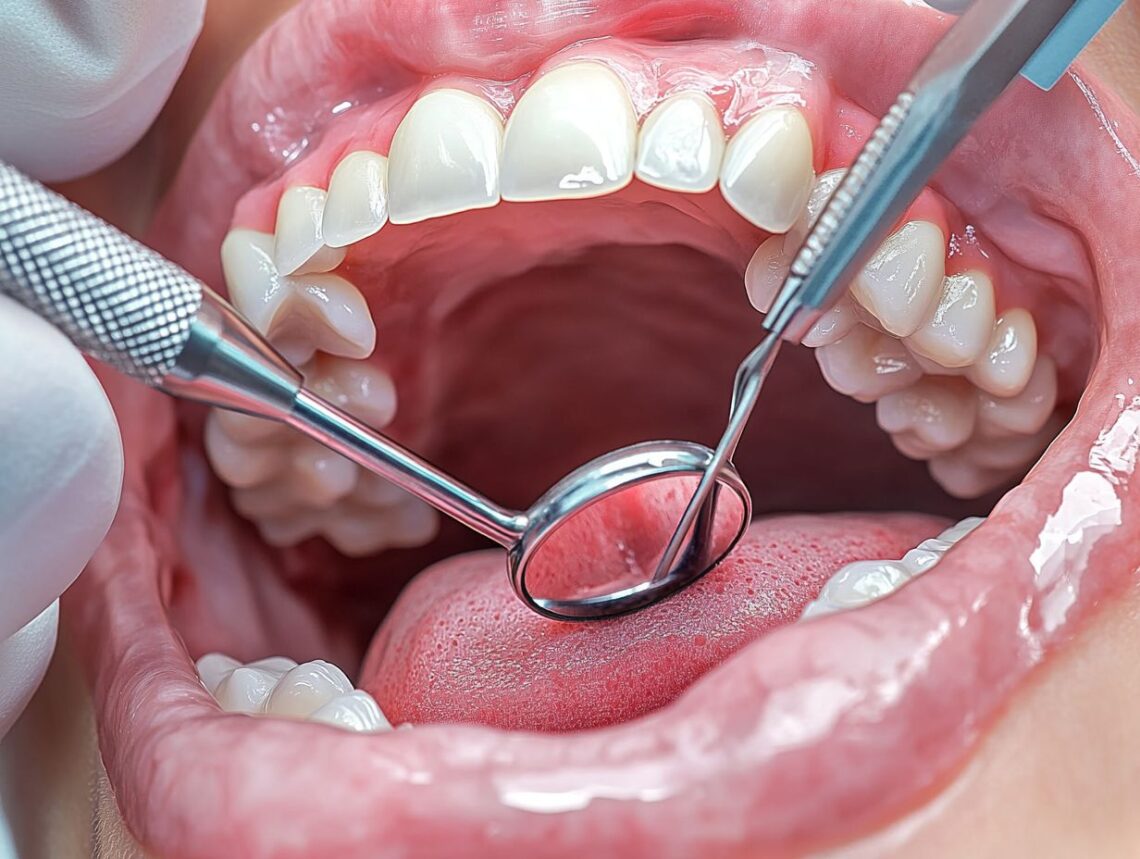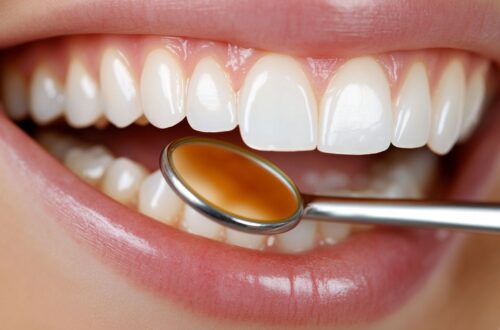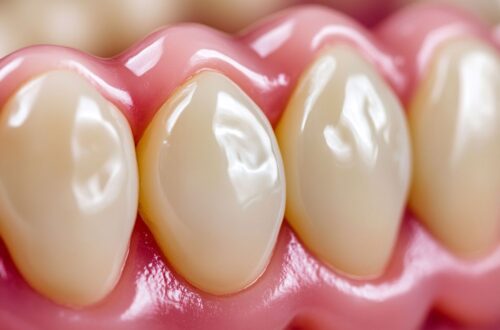Maintaining oral health is of paramount importance, and in some cases, routine professional cleanings may not suffice.
This document examines the deep cleaning teeth procedure—an essential treatment for individuals experiencing gum disease and significant plaque buildup. It outlines the circumstances under which this dental procedure is necessary, details the step-by-step process involved, discusses potential risks, and provides effective aftercare recommendations.
Furthermore, it highlights alternatives to deep cleaning, ensuring that individuals have comprehensive information to make informed decisions regarding their dental care.
Key Takeaways:
What is a Deep Cleaning Teeth Procedure?
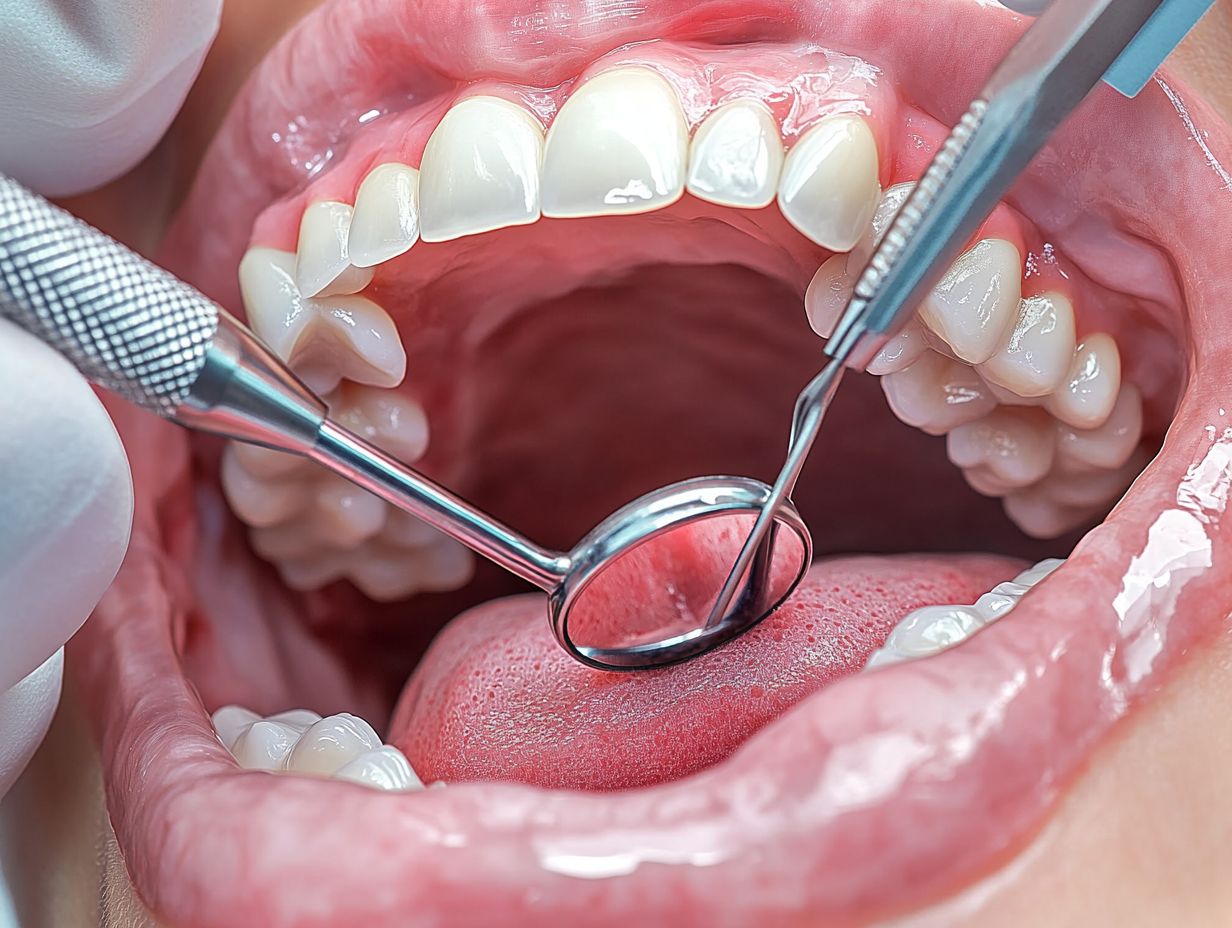
A deep cleaning teeth procedure, commonly known as scaling and root planing, a non-surgical gum disease treatment, is an essential dental treatment designed to enhance oral health by preventing and managing both gum disease and periodontal disease.
This deep dental cleaning procedure involves the meticulous removal of plaque and tartar accumulation from beneath the gum line, as neglecting such buildup can result in periodontal disease.
Dental professionals, such as those at the Cleveland Clinic, employ advanced techniques, including ultrasonic instruments, to thoroughly clean the root surfaces of the teeth through tooth scaling and smooth any irregular areas. This approach ultimately promotes healthy gums and minimizes the risk of cavities.
Understanding the Purpose and Process
The primary objective of the scaling and root planing procedure is to address gum disease and restore gum health through the effective removal of plaque buildup and tartar from the teeth and root surfaces.
This two-step process commences with scaling, during which dental hygienists employ specialized dental tools to meticulously eliminate stubborn deposits that accumulate both above and below the gum line. Following this initial phase of scaling, root planing is performed to refine the tooth roots, facilitating proper healing and reattachment of the gums.
Throughout the procedure, the administration of local anesthetic is crucial, and in some cases, antibiotics may be prescribed in ensuring patient comfort and minimizing discomfort while comprehensive cleaning is conducted. The dental tools utilized, including ultrasonic instruments like ultrasonic scalers and hand instruments, significantly enhance the efficiency and precision of the treatment.
At the conclusion of the session, patients can anticipate a marked reduction in gum inflammation and an improvement in gum health and an improved gum environment, thereby laying the groundwork for enhanced overall oral health.
When is a Deep Cleaning Teeth Procedure Needed?
A deep cleaning teeth procedure is often deemed necessary when indications of gum disease become apparent. This is typically identified during dental checkups, where a periodontal assessment may reveal the presence of gum pockets and evaluate gum pockets depth, inflammation, or bleeding.
Identifying Signs and Symptoms
Identifying the signs and symptoms of gum disease is essential for timely intervention, as indicators such as gum disease symptoms like gum bleeding, inflammation, and the presence of deep gum pockets may necessitate a deep cleaning procedure.
Recognizing these early gum disease indicators can significantly influence the trajectory of oral health, preventing more severe complications in the future. Plaque, a sticky film of bacteria, can quickly harden into tartar if not removed through regular brushing and flossing. This accumulation can lead to gum disease, resulting in not only cosmetic concerns but also serious risks such as tooth loss, gum recession, and systemic health issues, including heart disease.
Consequently, taking proactive measures to address symptoms upon their onset is crucial. Early intervention can streamline treatment and help preserve both oral health and overall well-being.
The Deep Cleaning Teeth Procedure: Step by Step
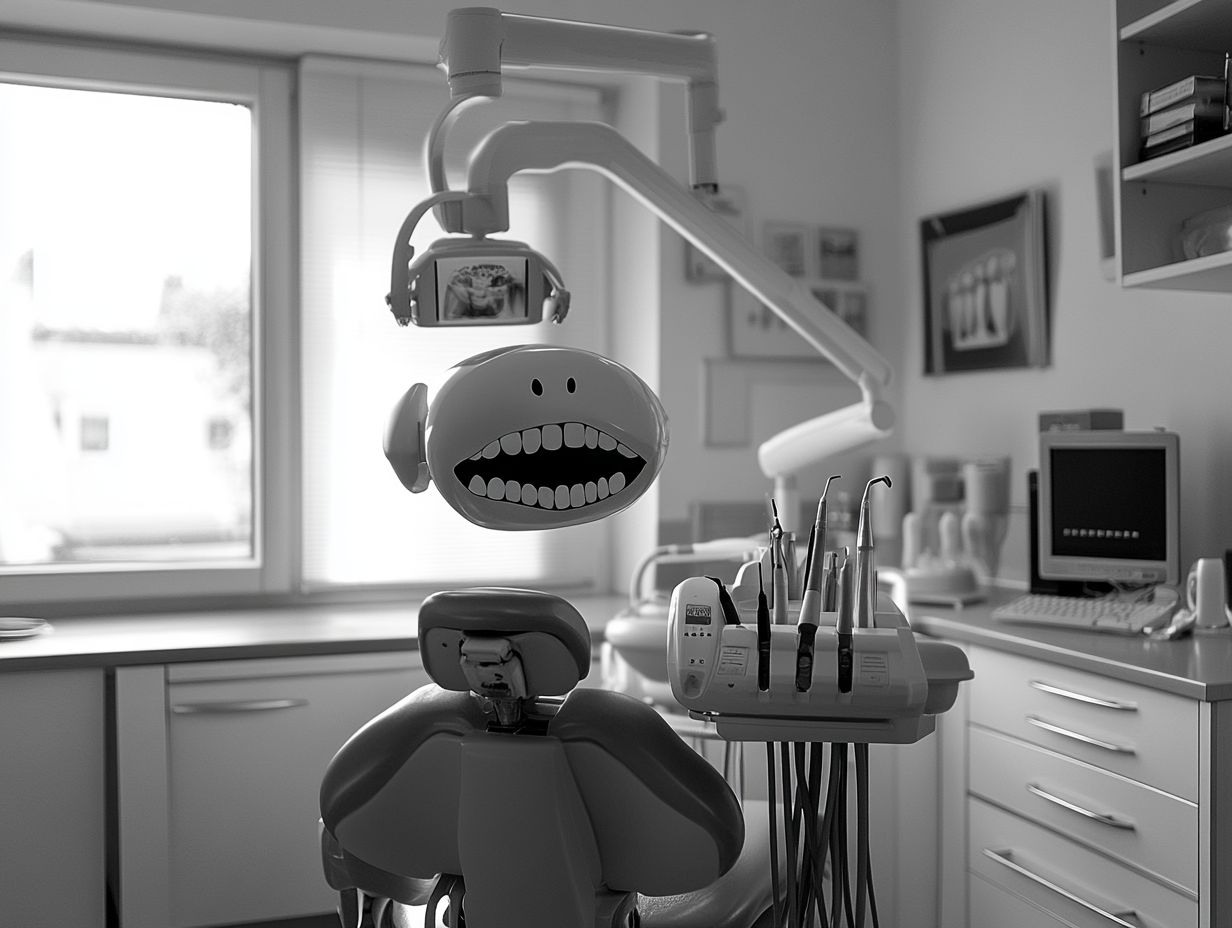
The deep cleaning teeth procedure, commonly referred to as scaling and root planing, entails a systematic approach to effectively eliminate tartar and bacteria from beneath the gum line.
This procedure employs specialized dental tools and techniques, including ultrasonic instruments, to ensure thorough cleaning and optimal oral health.
Preparation, Tools, and Techniques Used
Preparation for a deep cleaning teeth procedure entails a comprehensive dental evaluation and may incorporate the administration of local anesthetic to ensure patient comfort throughout the process.
Ahead of commencing the actual cleaning, dental hygienists typically provide a detailed explanation of the steps involved, fostering a sense of reassurance for patients. The procedure often utilizes ultrasonic instruments, which employ high-frequency vibrations to effectively break down plaque and tartar, surpassing the efficacy of traditional methods.
Hand scaling is employed to access areas that may pose challenges for the ultrasonic tool, particularly around the gum lines and between teeth. The hygienist will perform their duties with precision, ensuring that each tooth is thoroughly cleaned.
During the treatment, patients may experience some pressure, but they should not encounter pain due to the effects of the anesthesia. Following the procedure, patients can anticipate a follow-up care plan from their dental provider designed to help maintain their oral health.
Potential Risks and Side Effects
While the deep cleaning teeth procedure is generally considered safe, it is important for patients to be aware of potential risks and side effects, as noted by the American Dental Association.
These may include gum recession, temporary tooth sensitivity, and other potential side effects following the dental procedure.
Addressing Concerns and Complications
Addressing concerns related to gum recession and tooth sensitivity following a deep cleaning procedure is essential for optimal recovery and the maintenance of oral health.
Patients should be thoroughly informed about the potential complications that may arise after the procedure, including strategies for managing any discomfort they may experience. It is imperative for individuals to recognize which symptoms are considered normal and when it is appropriate to seek further assistance.
Establishing a follow-up routine can prove beneficial, ensuring that any concerns are addressed in a timely manner. Additionally, discussing the costs associated with dental treatments and available insurance coverage options can help alleviate financial stress for patients.
This proactive approach not only give the power tos patients to take charge of their oral health but also cultivates a positive and supportive dental experience.
Aftercare and Maintenance
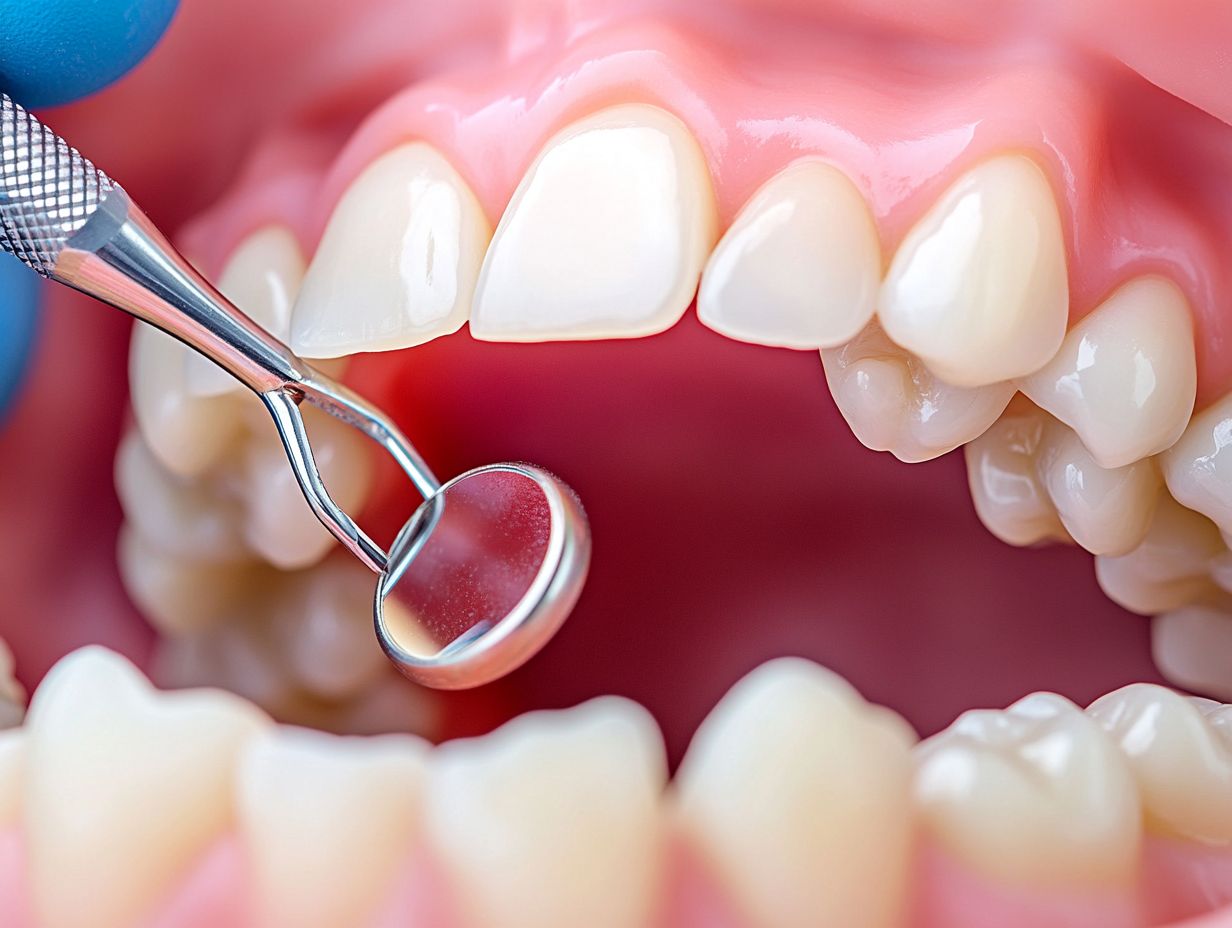
Aftercare and maintenance are essential components following a deep cleaning teeth procedure, such as regular dental checkups. These practices are crucial for ensuring long-term gum health and preventing the recurrence of gum disease.
Tips for Maintaining Oral Health Post-Procedure
To maintain optimal oral health following a dental procedure, it is essential to implement effective oral hygiene practices that emphasize the prevention of gum disease and encourage periodontal maintenance and the reduction of plaque accumulation.
In the days subsequent to a deep cleaning, individuals should prioritize the consumption of soft foods that are gentle on the gums, avoiding hard or abrasive items that may irritate the healing tissues.
Regular brushing with a soft-bristled toothbrush, accompanied by daily flossing, will significantly contribute to keeping the oral cavity free from harmful bacteria. Additionally, rinsing with an antibacterial mouthwash can further enhance gum health.
It is imperative for individuals to schedule follow-up appointments with their dental providers to ensure that the healing process is progressing as anticipated and to address any concerns that may arise. This reinforces the importance of regular oral evaluations in maintaining long-term oral health.
Alternatives to Deep Cleaning Teeth
For patients who may not be prepared for a deep cleaning procedure, several alternatives are available that can effectively address gum disease and enhance oral health.
These options include routine dental cleanings and gum treatment therapies and targeted gum treatment therapies.
Exploring Other Dental Procedures and Treatments
Exploring various dental procedures and treatments can provide patients with a comprehensive understanding of their options for enhancing oral health and managing gum disease.
Non-surgical therapies, such as scaling and root planing, are effective methods for eliminating plaque and tartar buildup, while advanced surgical options like flap surgery assist in restoring gum health. Additionally, preventive treatments, including regular cleanings and periodontal maintenance, play a crucial role in mitigating gum issues.
It is also important for patients to recognize the value of dental insurance, as many plans cover a portion of these essential procedures. This coverage makes treatments more accessible and affordable, thereby promoting proactive care and management of oral health.
Frequently Asked Questions
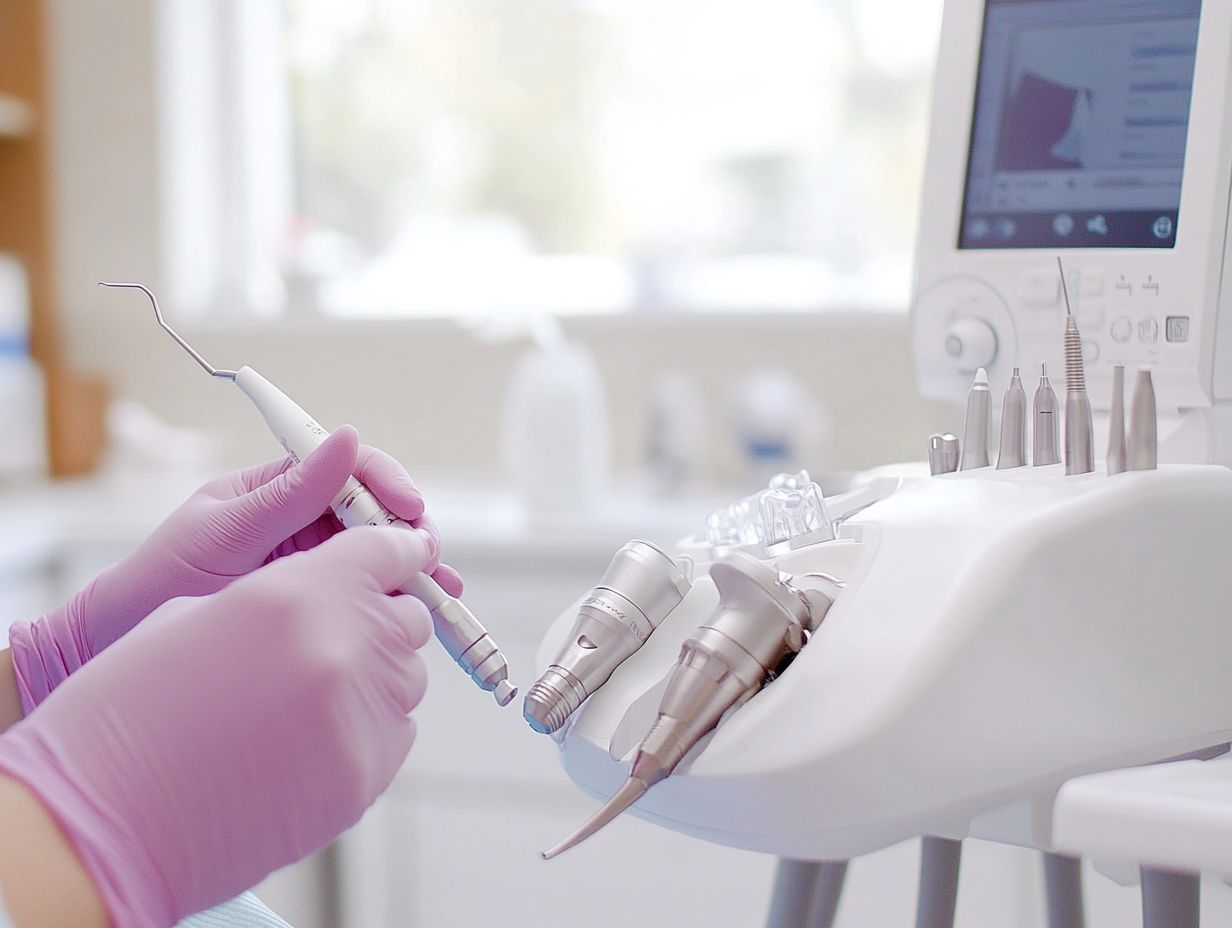
What is a deep cleaning teeth procedure?
A deep cleaning teeth procedure, also known as scaling and root planing, is a non-surgical dental treatment that involves removing plaque and tartar from below the gumline and smoothing the surfaces of the roots of your teeth to prevent bacteria from accumulating. This treatment is essential for maintaining oral health and preventing periodontal disease.
When is a deep cleaning teeth procedure recommended by your dental provider?
A deep cleaning teeth procedure is usually recommended when you have signs of gum disease, such as swollen or bleeding gums, deep pockets between your teeth and gums, or loose teeth. Your dentist may also suggest it if you have a lot of plaque and tartar buildup or if you have a history of gum disease. A periodontal assessment will help your dental provider determine the severity of the condition.
Is a deep cleaning teeth procedure painful?
While a deep cleaning teeth procedure may cause some discomfort, it is usually not painful. Your dentist will use a local anesthetic to numb your gums before the procedure, and you may feel some pressure or vibration from the dental tools, such as ultrasonic instruments, during the cleaning. After the procedure, you may experience some tooth sensitivity, but this can be managed with over-the-counter pain relievers or a fluoride treatment recommended by your dental hygienist.
How long does a deep dental cleaning procedure take?
The duration of a deep dental cleaning procedure depends on the severity of your gum disease and the number of quadrants of your mouth that need to be treated. On average, it can take 1-2 hours to complete the procedure, and it may be scheduled over multiple dental appointments.
What are the benefits of a deep dental cleaning procedure?
A deep cleaning teeth procedure can help improve your gum health, prevent tooth loss, and reduce the risks of other health problems, such as heart disease and diabetes, that are associated with gum disease. It can also make your teeth look and feel cleaner, fresher, and healthier. In addition, professional cleanings can help in the early detection and treatment of gum disease symptoms, reducing the risk of cavities and maintaining healthy gums.
How can I maintain the results of a deep dental cleaning procedure?
To maintain the results of a deep cleaning teeth procedure, it is important to practice good oral hygiene at home by brushing and flossing regularly. You may also need to use an antibacterial mouthwash or receive more frequent dental cleanings. It’s also essential to attend regular dental checkups to monitor the health of your gums and prevent future gum disease. Your dentist might recommend a periodontal maintenance routine, including periodic use of antibiotics to treat any gum inflammation and maintaining an oral health routine to prevent gum recession and other complications.
